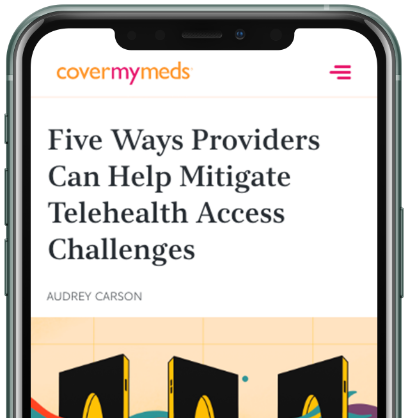How Pharmacists Are Helping Patients Afford Their Medications
Is a more permanent solution coming to give pharmacists more autonomy to practice patient clinical care — and what will that take from the legislative and healthcare industry acceptance side?

With the challenges the COVID-19 pandemic brought to the entire healthcare field, opportunities that were previously left on the back burner suddenly were actualized.
Pharmacies were no different.
At the end of last year, I called pharmacists the "often-overlooked providers” — as their long-expected evolution finally seemed to have arrived in the public spotlight.
Suddenly, pharmacists were free to act more like providers. So, when a patient asked, “How can you help me afford this medication?” The pharmacist could do just that. And do that they did, delivering affordability options in a critical time.
In this article, we look at the primary changes within pharmacy: the pharmacist’s role within prescription affordability conversations.
How prescription drug costs keep patients off therapy
No other developed country on earth spends more on prescription drugs per capita than the United States.Prescription Drug Prices in the United States Are 2.56 Times Those in Other Countries, RAND Corporation, Jan. 28, 2021
No wonder patients sometimes ask “why?” — especially as healthcare costs and out-of-pocket expenditures keep rising. Most drugs prescribed in the United States are generics — and generally more affordable. Patients tend to experience high costs when they’re uninsured, have a high-deductible healthcare plan, the medication simply costs too much or they lack insight into other price options.
In fact, one of the reasons patients don’t start or stick with treatment plans is because they cost too much. When patients can’t afford their prescriptions, 52 percent seek affordability options through their provider — and 29 percent go without their medications.CoverMyMeds Patient Survey, 2020
Over the last year, the picture’s gotten bleaker.
In 2020, more than one in three patients said they went without treatment just to pay bills and meet basic needs. More than two in five (43 percent) sacrificed those basics and bills in order to pay for their prescriptions.CoverMyMeds Patient Survey, 2020 Some even tried to make both work: Forty-one percent said they skipped or modified medication doses to stretch out their prescription.CoverMyMeds Patient Survey, 2020
These challenges were especially prevalent in 2020 as the COVID-19 pandemic prompted unemployment numbers to reach all-time highs and millions of Americans lost healthcare coverage as a result.
How pharmacists can help patients
While sticker shock at the pharmacy is a contributor to prescription abandonment, patients were 19 percent more adherent to fulfilling their medication when providers use a prescription decision support solution that offers price transparency to determine the best medication access options at the point of medication selection compared to those who did not have this insight.CoverMyMeds data on file, 2019
But a true end-to-end solution works for pharmacists, too.
More than half of patients surveyed said they asked their pharmacist about cheaper alternatives when their prescription costs too much.CoverMyMeds Patient Survey, 2020 And while price transparency and payment options should be a part of providers’ tools, patient empowerment tools downstream in the medication access journey can be useful.
In fact, technology can help facilitate productive conversations in all areas of the pharmacy workflow, from prescription intake to pick up. That’s because solutions built with a patient-centric focus keep lines of communication open among patients, providers, pharmacists and payers. And enabling patient choice in price, method of treatment and mode of provider interaction can help improve feelings of control and trust, potentially leading to improved therapy adherence.
Identifying manufacturer copay or rebate cards upfront is one way to better inform patients and help them understand what out-of-pocket costs will be —and if properly monitored, could increase adherence. It could also lower costs significantly.
Being vigilant about generic alternatives is another proactive measure. As mentioned earlier, most prescription drugs in America are generics, but they’re often not as visible when patients choose to comparison shop.
Seventy-two percent of patients said they regularly ask their pharmacist questions about medications, and 62 percent ask their provider about affordable options for drugs.CoverMyMeds Patient Survey, 2020 Walking patients through this process–whether it’s introducing them to new technologies or informing them about what to look for–are catalysts for adherence.
While patients are willing to prescription price shop, they often don’t know where to start or what’s available. Sixty-two percent said they actively asked their provider about medication price and affordability options.CoverMyMeds Patient Survey, 2020
What does the future look like for pharmacists’ roles and impacting adherence?
Legislation around drug pricing has been a hot topic in recent years. While there are currently no federal bills geared toward improving access to affordable medication that have been passed into law, individual states have acted toward curbing rising drug prices.
In the immediate future, the role of the pharmacist becomes even more important.
Education, research, technology — these all factor into increased adherence and making sure patients aren’t foregoing vital medication because of cost.
To learn more about the legislation driving the evolving role of pharmacists, read our 2021 Medication Access Report Legislative and Regulatory Edition.
The latest healthcare insights, floated right to your inbox.





